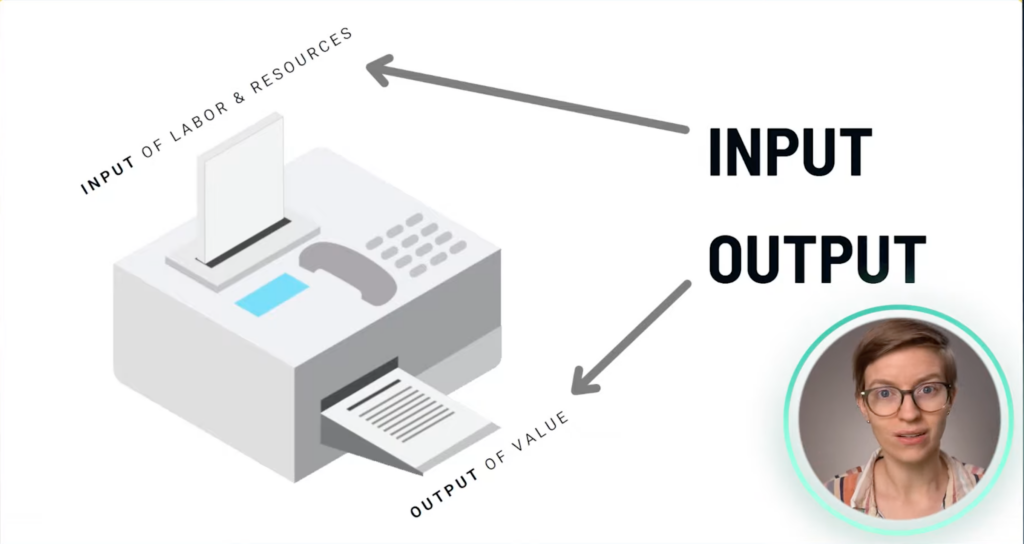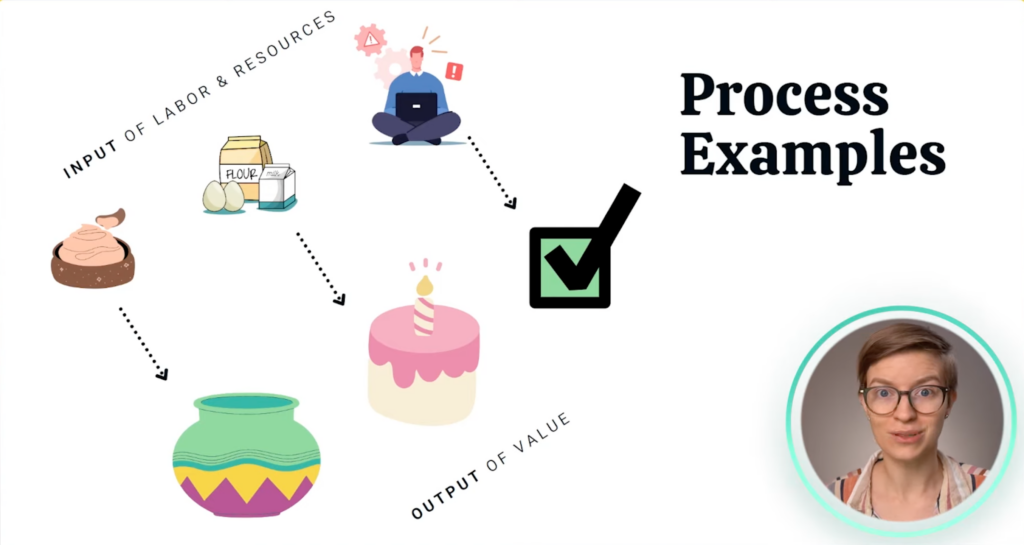If you’re new to the process world, you might still wonder, “What is process exactly?” 🤔
Process is ingrained in almost everything we do. With so much unnecessary fancy jargon in the business world, it can be hard to figure out what process is at its core.
That’s why we’re breaking down what a process is and some synonyms you can use to remember the meaning of process and start identifying them in your daily work.

Not a video person? No worries! We’ll cover all the main points in this article.
What is a process?
Somewhere along the line, you’ve heard the idea of business systems, processes, and SOPs.
You hear all these buzzwords and think, “Wait, what is process?”
This is a typical place to be when you’re starting to explore the world of business systems. There’s an endless amount of jargon we keep using to define the same things in an unnecessarily fancy way.
In this article, we’re breaking down what a process is and some synonyms you can use to remember the meaning of process to start identifying them in your day-to-day work.
Let’s dive in!
To watch this explanation in video format, watch the video at the top of this article at timestamp 00:00.
Processes turn inputs into outputs.
One of the easiest ways to explain process is to look at something like this:

This is a printer with two defined sides.
There’s the input of paper, electricity, and a human putting that paper into the printer and plugging in the printer.
Then, there’s the output of printed paper.
This machine is turning an input into an output. So, what can we call this machine?
If you wanted to be literal, you could call this a printer, which is correct. If you called this a machine, you’d also be correct.
However, if you take a step back and are a bit more theoretical, you could call this thing turning inputs into outputs a process.
Process is just a path to a defined result.
When you turn one thing into another thing you’ve defined, the journey of turning blank paper into printed paper is a process.
To watch this explanation in video format, watch the video at the top of this article at timestamp 00:38.
Parts of a Process
The key things you need to have are:
- A defined result: we need to know where we’re trying to get to.
- A path to get to that defined result.
That’s it!
Efficiency isn’t required to have a process!
No requirement says this path needs to be perfect. It doesn’t need to be the most efficient or straight path.
It’s whatever path works best for you!
To watch this explanation in video format, watch the video at the top of this article at timestamp 01:45.
If you’re looking to systemize your operations, define your processes with action-oriented exercises, and equip them with SOPs, automations, delegation, and more — check out our FREE strategy training, The Blueprint, to learn more.
You already have a process!
As we mentioned before, you need a path and a known destination to have a process.
We’re highlighting this because we often hear from people who are new to the process world view the concept of process as this thing that “some people can have, but I could never realistically achieve in my business.”
The fact is, you already have a process.
Every human being is pretty process-driven. All we mean by this is we have ways of doing things.
These “things” in your everyday life outside your business are called habits.
Habits are ways of doing things you know you need to do, which is the same concept as process. We’re not sure why the business world collectively decided that the word “habit” isn’t fancy enough to be the word we use.
Process is the word used in business and organizations, but they’re the same thing.
Anything we do to go from inputs to a known output is a process.
3 Examples of Process
One example of this is turning clay into a pot.
Labor, energy, paint, and clay make up the creative process.
Another example is the baking process. The ingredients, oven, and time all make up the baking process.
These are two physical processes that you can see taking shape. However, this process mindset also applies very heavily to non-tangible things.
For example, let’s say you are a copywriter, and your job is to turn research and skill into a sales page about a particular offer. As a copywriter, you also have a process.

Your writing process might not be tangible, but it’s still you taking a path towards a known outcome. In this case, that outcome is a written sales page.
Anytime we have a known destination and take steps towards that destination, we are living out a process.
When you mow your lawn a certain way, that’s a process.
When you take out the trash a certain way, that’s a process.
We eat, sleep, live, and breathe process already. All we want is to help you recognize what you already have.
To watch this explanation in video format, watch the video at the top of this article at timestamp 02:34.
Once you find processes, you can start systemizing your organization with SOPs, automations, and delegation plans.
Speaking of acknowledging our processes, if you can start finding processes around you or your business, you can start improving them.
We can take a look at how we write a sales page, how we take out the trash, or how we make a pot. Then, you can start making these processes more efficient, stable, delegation-friendly, and even automated!
You can do all these things once you acknowledge the process exists. We actually have a tool that can help you achieve this: The Blueprint.
In this free strategy training, we walk you through not only an expanded definition of process but also an exercise that defines what your organization does in detail. We then teach you how to document each process so you can create SOPs, automations, delegation plans, and resources based on what your business does.
So if you’re learning about process, in the interest of making your business more systemized, and you’re not sure where to start, check out The Blueprint. You won’t regret it. 😉
Until then, enjoy the process!
